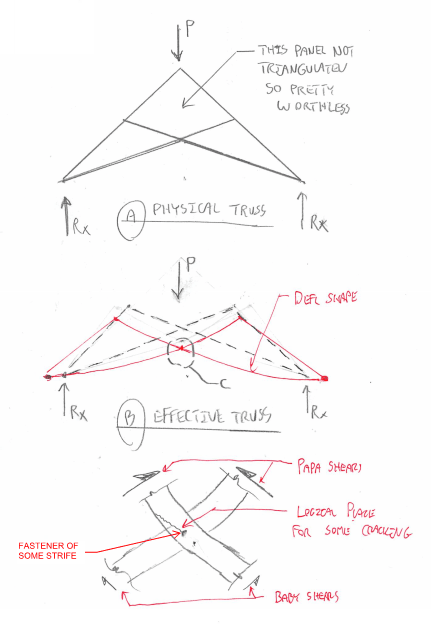PSUengineer1
Structural
Please see attached pic file (this time it successfully uploaded). I have two scissor trusses about 15 feet apart over a church sanctuary built in 1800s. The bottom chord of one truss is fractured. The fracture appears fresh. High winds (65 mph) came through the area. I think the wind pressures, when applied to the roof, tried to flatten the truss, and the truss did not have sufficient capacity to resist the horizontal loading (i.e. thrust), resulting in fractures at bottom chord. In other words, the bottom chords were not strong enough and the truss deflected downward. The exterior bearing walls are not pushed out. I realize 65 mph should not kill the roof structure, but there are signs of prior repairs at the roof framing (sistered rafters between trusses), making it susceptible to damage from otherwise non-damaging winds.
Do you agree that damage to bottom chord could be caused by a load such as wind applied to the top chord?
Thank you.
Do you agree that damage to bottom chord could be caused by a load such as wind applied to the top chord?
Thank you.

